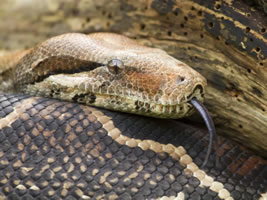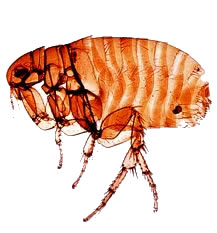Pet Health Information for our clients
EXOTICS
 We have experience in treating a wide range of exotics from snakes, lizards, through to Koi carp. It is an area I find fascinating. We even have Rosie, a tarantula, on our books.
We have experience in treating a wide range of exotics from snakes, lizards, through to Koi carp. It is an area I find fascinating. We even have Rosie, a tarantula, on our books.
All these species have various housing needs. The maintenance of the habitat is critical to the well- being of the animal. I have some experience of their living conditions in the wild.
We are not specialists in this area and will always seek advice from a specialist when required.
Care of your Pet’s Bandage
 Your pet has been had a dressing applied, it is important that you follow the simple steps as listed below to give your pet the best chance of healing.
Your pet has been had a dressing applied, it is important that you follow the simple steps as listed below to give your pet the best chance of healing.
- ALWAYS keep the dressing clean and dry and place a bag over when outside you will need to secure this on with a bit of a tie
- Do not allow your pet to interfere with the dressing please ask your vet for a buster collar if you think he/she is likely to chew or lick it
- Should the dressing slip you MUST not attempt to put it back on as some dressings if applied too tightly may restrict the blood flow and cause more damage, ring your vet to inform them if this happens
- ALWAYS remove the plastic bag when not outside as this may cause the area to sweat causing more problems with wound healing
- Your pet must be restricted as directed by your vet no free running off the lead
- It is important to check for swelling above and below (if applicable) the dressing if you think it is you must contact your vet as soon as possible
And finally if you follow the above rules this will ensure the speedy recovery of your pet which will mean they can get back to normal exercise as soon as possible.
POST OPERATIVE INSTRUCTIONS
POST OPERATIVE INSTRUCTIONS
These notes are for guidance and to help you with any queries you may have about what to do or expect in the days following an anaesthetic or operation.
BEHAVIOUR- Your pet is likely to be quite sleepy the evening after an operation. Some animals may also be unsteady on their feet. They should be alert and able to walk the day after anaesthetic.
BED-Your pet should be kept in a dry warm room with suitable bedding.
DRINK- Frequent small amounts of water should be made available on the first evening, water can be offered as usual thereafter.
FOOD-A small meal is recommended the first evening. DO NOT be concerned if this is refused this is common after an anaesthetic. Most animals should be eating normally within 2 days. Some animals may require a special diet, this will be explained by the Veterinary Surgeon.
EXERCISE-This should be restricted. We advise you to keep your pet indoors for the first 24 hours except for the toilet. Cats should be kept in post operatively. Dogs should only be lead walked and exercise restricted until the final check-up.
LICKING-Licking of the operation site can cause swelling, inflammation and wound breakdown, therefore this should be discouraged. Some animals can be persistent and in these cases a collar may be fitted to prevent this from happening. Please do not remove the collar unless agreed by the vet. If concerned seek advice from the veterinary surgery.
CHECK UP-If your pet requires a post op check-up you will be advised as to when to bring your animal back. These are free of charge and carried out by the vet.
SUTURES-Some sutures dissolve, others will need removal. This should have been explained on discharge. If unsure contact the surgery.
PROGRESS-Within 2 days of an operation your pet should have eaten, passed urine and faeces. If they haven’t or you are concerned please contact the surgery.
External Parasites
Fleas
Although dogs and cats carry fleas they are all in fact cat fleas, the true dog flea is rare in Britain. Rabbit and hedgehog fleas will live on any pet.  Fleas live for about 3 weeks and must feed every 20 minutes which can cause dogs and cats to itch and scratch. Heavy infestations on puppies and kittens can cause anaemia and occasionally death.
Fleas live for about 3 weeks and must feed every 20 minutes which can cause dogs and cats to itch and scratch. Heavy infestations on puppies and kittens can cause anaemia and occasionally death.
An adult flea can lay up to 40 eggs a day and are distributed all around the house. The eggs change to larvae which feed in the carpet or bedding and then change to pupae which can lay dormant for up to 2 years before they hatch into adult fleas.
The adult flea represents only 5% of the life cycle so simply just treating the pet will not solve the problem.
Treatments
- Prescription ‘Spot-ons’ e.g. Advocate, Advantix, Frontline Combo. These treat your pet. Some spot-ons can be bought in pet shops but these are generally older products and may not be as effective.
- Household Sprays e.g. RIP Fleas. These treat the environment. Remember as 95% of the flea population are in the environment it is very important to use a spray in addition to a ‘spot-on’, in an infestation.
- Collars e.g. Soresto.
- Tablets such as Bravecto
All these products are safe and effective but each has different advantages so ask us phone us for advice.
Please note that although any of our team can advise you and dispense these products, they are prescription medicines and it is necessary for a vet to see your animal at least once a year in order for us to dispense them.
Ear Mites
 Tiny white mites that live in the ear canal of cats and dogs and cause intense irritation, head shaking and copious wax to be produced.
Tiny white mites that live in the ear canal of cats and dogs and cause intense irritation, head shaking and copious wax to be produced.
They will move from pet to pet either via bedding or direct head to contact between pets.
Treatments
Topical parasiticidal ear drops
Advocate or Stronghold spot-on
Cheyletiella Skin Mites
Nicknamed “walking dandruff” it causes intense irritation along the backline and large flakes or dander. Most common in puppies and breeding bitches
Treatment
- Frontline spray
Fox Mange or Sarcoptic Mange
These mites live just under the skin surface especially on the edge of the ear, the elbows and hocks of dogs. It is not clear how they are transferred from fox to dog as there is rarely direct contact so this must also occur indirectly via fence posts, trees or digging. The mite can be transferred to humans usually causing intense itching on skin around the wrists, waist and neck as these are the areas not covered by clothing when you cuddle or pet.
Treatment
- Advocate or Stronghold spot-on
Biting Lice
Biting lice are blood sucking insects that can be seen with the naked eye. They have no wings and appear flat. They live only on that host and do not infect humans. They spend their entire life cycle on the host and do live in the environment. In large numbers they cause itching and anaemia.
Treatment
- Frontline or Advocate spot-on
Demodex
Demodex mites are generally a disease of young animals or older dogs suffering from a depressed immune system. The mites are found on virtually all adult dogs and most humans without causing any problems. They live in the hair follicle and spend their entire life on the dog.
The mites are transferred directly from mother to puppies within the first few weeks of life. Most puppies are immune to the mite’s effects and show no clinical signs but a few are not and lesions develop. There is hair loss around the eyes and head with crusting and malodorous skin. If this is not treated the dog can become very ill.
Treatment
Often very difficult as this involves using antibiotics to reduce secondary infection in the skin and very powerful insecticidal washes which can be difficult to apply around the eyes and face.
Worming Advice
Worming you pet should be regarded as a vital part of keeping your pet happy and healthy, just as much as vaccination or feeding the correct diet.
Roundworms
Toxocara – Found in adult dogs and cats and puppies and kittens. It can be transmitted in several ways:
- Larvae in pregnant bitches transfer via the placenta to puppies before they are born
- From the bitch or queen via the milk to sucking puppies and kittens after birth. A heavily infested bitch can shed 15 million eggs per day into the environment
- Ingestion of intermediate hosts (especially in cats) eg mice, earthworms, birds, slugs
- Snuffling or ingestion of contaminated soil and grass
If a person (commonly a young child) ingests these eggs or larvae they can contract human toxocariasis. This can cause blindness, asthma and poor appetite. This is a very serious disease. The eggs can survive in soil for up to 2 years. This is also why it is important to pick up after your dog!
Death in young cats and puppies can occur if infestation is significant enough to develop intestinal obstruction but usually thriftiness with anaemia and intermittent diarrhoea as the presenting signs.
Whipworm – Found in the large intestine of dogs. Spread through snuffling and ingestion of contaminated soil and grass. Can cause marked bloody diarrhoea.
Hookworm – Rare in Great Britain in dogs, absent in cats. Usually found in dogs brought in from abroad. Causes anaemia.
Lungworm – Endemic in many parts of England, especially the South and South West, due to global warming. This worm infects the arteries around the heart and the heart itself. It is a very serious disease and can potentially kill dogs. The fox is the reservoir for domestic dogs. Dogs acquire the infection from ingestion of worm larvae present in slugs and snails that have fed on faeces of infected foxes or other dogs. These larvae migrate from the intestine of the dog to the blood vessels in and around the heart. The mature worms lay eggs that are coughed up and swallowed to pass out in the faeces.
Symptoms include gradual onset of heart or lung disease, a chronic cough, anaemia, poor blood clotting and weight loss. Sudden death due to blood loss during routine surgery has been known.
A different species of lungworm does occur in cats but does not lead to the serious clinical illness as in dogs.
Tapeworms
Dipylidium – the flea tapeworm. When dogs and cats have adult fleas on their coat and skin, they are often swallowed during the normal grooming process or when nibbling due to the itchiness. The tapeworm segments can be seen stuck at the base of the tail and these shed eggs onto the coat which in turn are ingested by the flea larvae.
Taenia – Cats from eating earthworms,mice, rats and other rodents and birds
- Dogs from eating infected offal and carcasses of wild animals – can cause serious disease in man due to formation of brain or liver cysts
Echinococcus – Dogs from eating infected offal. A very serious disease of any mammal and man if eggs ingested via water, salads, vegetables or licking of fingers.
Treatments
Because of the concerns regarding your pet’s health and the risk to yourselves and family the British Small Animal Veterinary Association and our practice recommends MONTHLY WORMING (especially if you have children) where the risk is greater than normal.
- Drontal Plus tablets (dogs) and Drontal Cat tablets treat all roundworms and all tapeworms
- Milbemax tablets (dogs and cats) treats all roundworms and tapeworms but not lungworm unless given weekly for 4 weeks and then this only gives “a reduction in level of activity”.
- Stronghold spot-on – dogs and cats – treats roundworms only
- Advocate spot-on – dogs and cats – ONLY licensed product against lungworm – treats all roundworms, hookworms, whipworms and lungworm.
- Panacur paste or granules – treats all roundworms, tapeworms and lungworm
Dental Care
It is generally recognised in clinical practice, between 70-80% of cats and dogs over three years old will have some degree of dental disease. Over time, debris, bacteria and inflammatory cells build up on the teeth to form plaque which, if not removed, will become mineralised to the hardened substance known as tartar, or dental calculus.
This in turn, can cause inflammation of the gums know as gingivitis, and may lead to periodontitis which can cause loosening of the teeth in their sockets. Ultimately dental disease can leave pets with sore, smelly and painful mouths, and cause them to be unwell.
In some cats there is a genetic weakness in the tooth enamel that leads to painful erosive lesions on that can lead to the crowns breaking away exposing the nerve and root.  These teeth require extracting to remove the source of pain.
These teeth require extracting to remove the source of pain.
These, and other dental conditions, are always checked for as part of any veterinary or nurse clinic examination and during the annual health check and vaccination.
Once a vet or nurse has examined your pet, advised a dental procedure would be beneficial and discussed all the pre-operative considerations, we will move forward with a general anaesthetic when a much more extensive examination will be possible.
The tartar will be gently removed from the surfaces of the teeth with special instruments and a sonic scaler.
All the teeth will be checked for areas of damage and security within the socket and then polished carefully to remove any microscopic lines on the surface of the enamel which will help to slow down the accumulation of plaque in the future.
If extractions have been necessary, your pet may require pain relief and antibiotics. We have a state of the art dental machine which has a high speed drill to aid in tooth extractions and root removal, a sonic scaler, high speed polisher and water spray coolant.
It is well known that plaque can begin to build up on the surfaces of the teeth very quickly after a dental has been performed and that tooth brushing, in conjunction with other measures, is the most effective way of minimising this accumulation.
Pets should be introduced to brushing slowly, using a soft pet toothbrush and specially formulated toothpaste.
The toothbrush should be used in small gentle circular movements in the area where the tooth meets the gum.
To supplement home dental care regimes, there are specialised veterinary diets, chews, pastes, gels and granules available to buy from us, all of which help to decrease the accumulation of plaque on the teeth.
Useful Links
Dogs Trust Shrewsbury
For local canine re-homing
DONKEYS
Useful information for donkey owners
Animal Welfare Foundation
This organisation produces helpful leaflets for animal owners over a wide range of species and issues
UK Government website
This provides information for taking your pets abroad
Pet Blood Bank UK
A charity providing a national canine and feline blood bank. Find out more about how you and your pet can help
Petlog for Microchipping
The UK’s largest database for microchipped pets
International Cat Care
Up-to-date information on cat disease, behaviour and general care
Horses Useful information for horse owners
British Horse Society and Healthy Horses
Alpacas
Useful information for alpaca owners
Agria Pet Insurance
For Pet Insurance
Coping with the loss of a pet
The Society for Companion Animal Studies provide a support service for coping with the grief of a lost pet either through death, separation or enforced separation
PDSA
A charity providing some help for people outside the catchment area of a PDSA surgery
The Kennel Club
Information on Dog Breeds, choosing the right breed for you and UK contact details for rescue dog groups

Vet in Powys - providing professional and dedicated care for your pet. Photos courtesy of Jake Stephen
